Pandora: Finding the Paid & Organic Equilibrium
iProspect Denmark & UK
for
Pandora
Kategori :
Type :
andet


Throughout the history of Search Marketing, two major challenges have constantly been hot topics amongst Paid Search and Organic Search strategists and specialists:
1. Identifying the keywords, queries, and phrases that generate incremental growth and minimize cannibalization on Organic Search.
2. How to find the right balance between investment in branded and generic Search terms and queries.
The apparent bias in how marketing- and analytics platforms attribute traffic, conversions, and revenue between Paid- and Organic search has for a long time contributed to a detrimental KPI bias.
For too long, this has directly and indirectly has impacted how marketeers and advertisers have evaluated, optimized and resource-distributed across the two disciplines.
For many advertisers, this undermining dynamic has resulted in a lack of integration between Paid and Organic Search activities, typically resulting in an overinvestment in Paid Search keywords with a low incremental business output, instead of working synergistically towards the highest possible collective output from the same Search intent.
These challenges were putting increased pressure on Pandora, with the business suffering from heavily increased competition and CPC inflation on branded Search terms in the recent years. This was particularly the case for the UK market which has a wide range of resellers and fraudulent sites competing for branded Search terms. This meant that their branded investment on Paid Search increased 110% in Q2 2021 compared to 2019 and took up 70% of their total Paid Search investment.
When looking at last-click attribution, maintaining the brand investment level seemed like the only option to continue to drive the same levels of sales volume from Search. However, when we looked at the Marketing Mix Models, we could see a steadily decreasing incremental ROAS from the overall Search investment. The incremental ROAS from branded Search had dropped 49% compared to Q2 2019.
With these unfortunate developments in mind, we wanted to dynamically establish the optimum spend level on branded Search, free up spend from brand to invest in generics, while not compromising last-click contribution of revenue from the Search engine. These factors combined resulted in an overall goal of increasing the incrementality of the Search investment, without requiring the manual switching on and off branded keywords daily.
We knew that we had to implement a dynamic and automated solution to do this effectively, as Organic Search rankings can change, and results differ considerably based on the position in the SERP.
The SEO position for Pandora UK has been a focus for iProspect and with a stable base, this was a great opportunity for utilizing iProspects proprietary technology, OneSearch Activate.
OneSearch is a Search-automation technology that allows dynamic negation of Paid keywords based on Organic rankings, the general auction competition, and overall Search performance from analytics platforms. This allows Organic listings to take up a higher proportion of the branded Search intent, so the spend previously used on these keywords can be reallocated to generic campaigns with higher incrementality.
We set up Pandoras top 10 branded keywords based on spend and revenue in OneSearch and connected their Organic rankings through an API with Accuranker to be imported directly into OneSearch. As Pandora uses Adobe Analytics for last-click attribution, we also included a custom connection to pull in on-site performance data from Adobe, so we could get a holistic view on the performance of each individual keyword across Paid and Organic. This data combined allowed us to make designated strategies for each of the branded keywords to make sure we were not turning off keywords on Paid Search that would cause a drop in overall sales and revenue.
When turning off branded Paid keywords, we wanted to avoid the following dynamics:
• Turning off keywords with a bad Organic ranking
• Drop in aggregated CTR on keyword level across SEO and PPC
• Overall drop in revenue from Paid and Organic
To avoid these factors compromising overall Search performance, we implemented the following rules. Evaluating this at a keyword level daily allowed us to automatically adjust a shared negative keyword list dynamically:
• Rule 1: Organic ranking better than 2
• Rule 2: Revenue index YOY on keyword level could not drop below 90
• Rule 3: Overall traffic index YOY on keyword level could not drop below 90
If all the scenarios above returned true, we would negate the keyword. We also ensured that we could assess the overall aggregated CTR development after negating the keywords. If aggregated CTR across SEO and PPC did not drop more than 15% when turning off Paid Search, we would continue with negativizing the keywords if the ruleset returned true.
The keywords activated in OneSearch accounted for approximately 60% of the total Search spend, and most of the keyword pool was quickly negativized, so we had to make intelligent budget reallocations to generic keywords with higher incremental revenue contribution.
We made two independent runs on OneSearch across Q3 and Q4 of 2021 and compared these with similar periods in the same timeframe. It is important to note that the individual performance on Paid Search is compromised as a lot of traffic and volume is transferred to Organic, so we must evaluate the performance holistically across Paid and Organic:
• Overall CPC across Paid and Organic was decreased by 34%
• Combined ROAS across Paid and Organic was increased with 22%
• Brand spend share on Paid Search was reduced with 50% which meant that 35% of Pandora’s budget could be reallocated to generic keywords
• SEO traffic increased with 106% and revenue increased with 119%
Results were also clearly documented in the Marketing Mix Model produced by an independent third-party, where an uplift in the Paid Search channel was documented.
• The OneSearch system implemented a 35% overall shift in invested Search budget from branded keywords towards generic keywords which generated a net-lift of 350% in incremental revenue compared to the original spend distribution.
In addition to these results, we did not increase Paid Search handling in the test period, and we established an optimum brand spend level around 25% to maintain satisfying overall brand results.